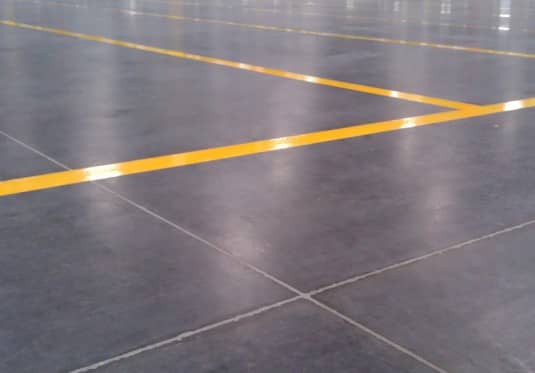 Concrete floors often have control joints, or deep V shaped grooves that run along the breadth of the floor and give the appearance of distinct slabs. Such joints are there not for the design but for a purpose – it prevents the floor from cracking. Concrete normally expands or contracts with changes in temperature, and this causes it to crack. Control joints provide a weakened line in the concrete and thereby direct the crack to run its course through these lines.
Concrete floors often have control joints, or deep V shaped grooves that run along the breadth of the floor and give the appearance of distinct slabs. Such joints are there not for the design but for a purpose – it prevents the floor from cracking. Concrete normally expands or contracts with changes in temperature, and this causes it to crack. Control joints provide a weakened line in the concrete and thereby direct the crack to run its course through these lines.
Many home or premises owners may want to get rid of control joints, to provide a seamless look to the floor. However, at the same time they would still want to ensure the integrity of their floors, and prevent them from cracking. Using epoxy joint fillers allows them to achieve the best of both worlds.
Epoxy fillers are 100% solid epoxy formulation crack filler, resembling hard rubber. It is resilient, even at temperatures as low as 10°F, facilitating the expansion of concrete floors without the effect manifesting on the floor. Its semi rigid characteristic facilitates a greater traction on the concrete edges of joints. This product is also resistant to most common chemicals.
Apart from effectively masking control joints, epoxy joint filler is also the material of choice to fill construction joints, isolation joints, chipped away chunks, holes, or any other depressions that accumulate over time.
The process of applying epoxy joint filler is simple.
- Mix in the ratio recommended by the manufacturer, which is usually 1:2.
- Add dry bagged fine sized sand to the solution, for harder resin and increased rigidity.
- Pour the solution into the cracks and joints that require filling up. Alternatively inject it into the joint using a caulking gun.
Alternatives to epoxy joint filler, such as latex caulk, are soft and shrink when dry, causing depressions and undulations. To get the seamless look for your floor, check out the line of epoxy joint fillers available at Runyon Surface Prep.